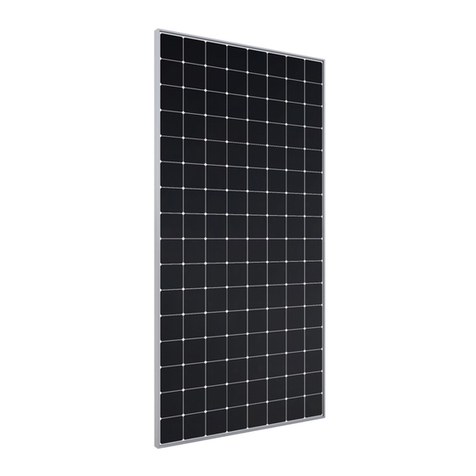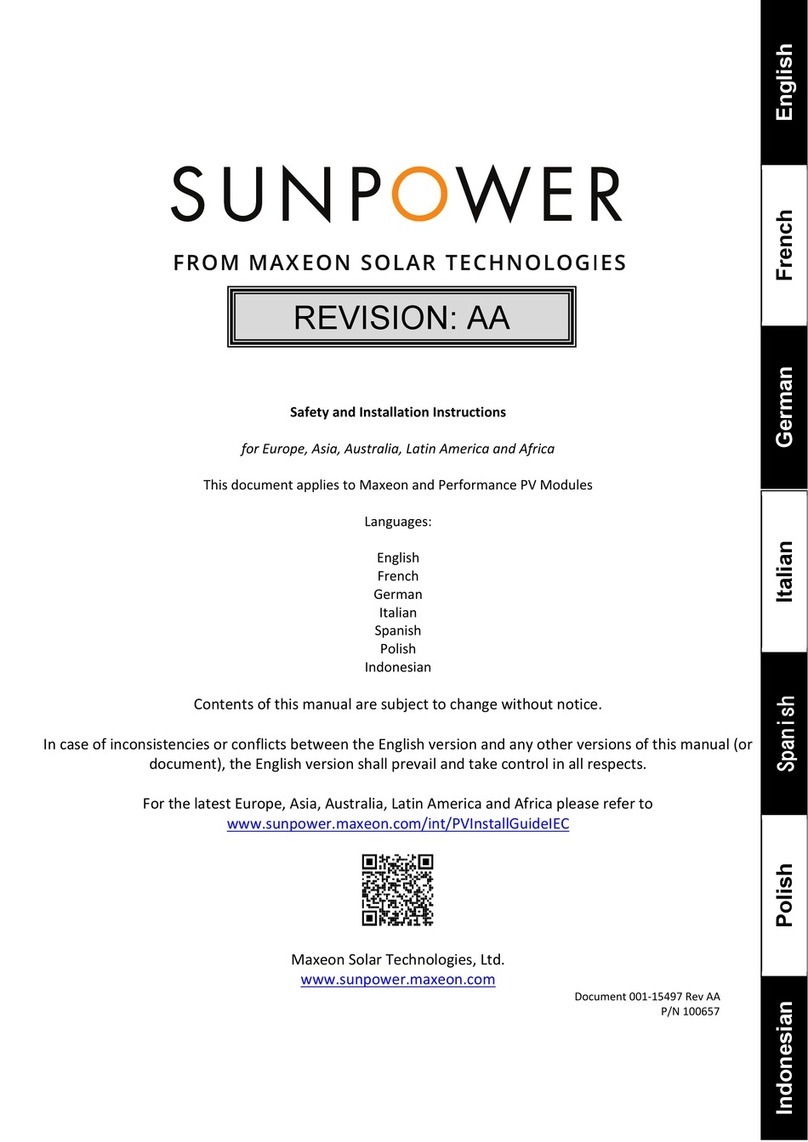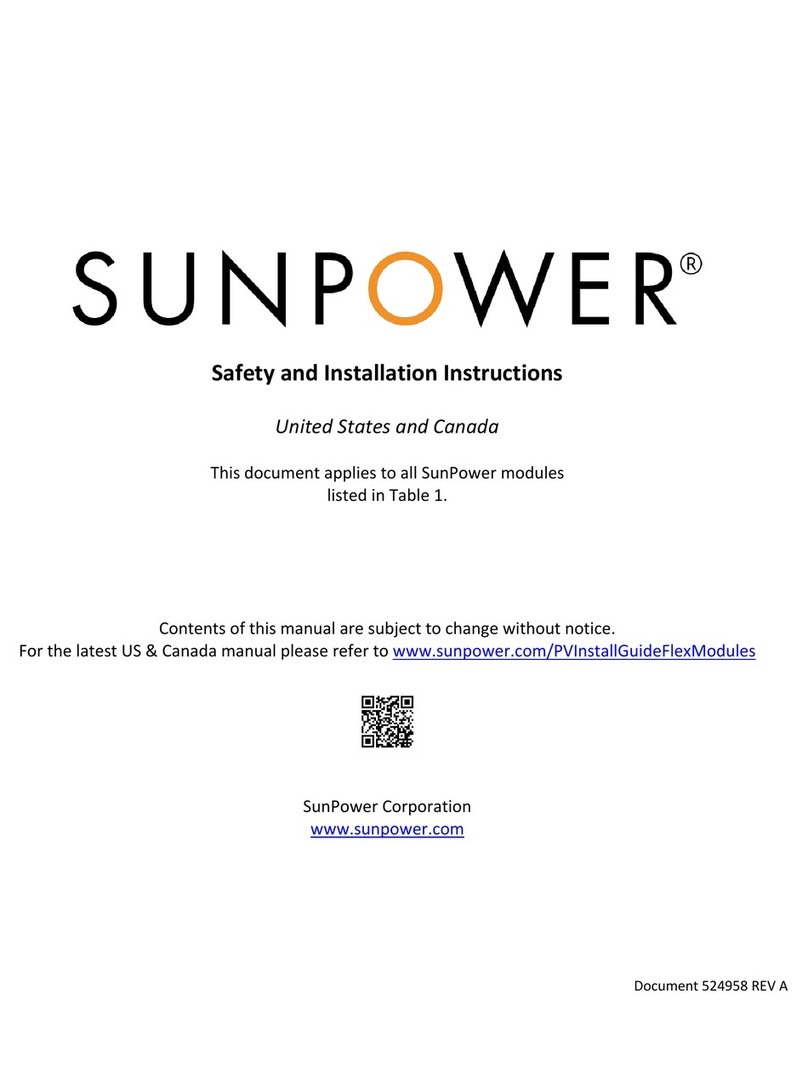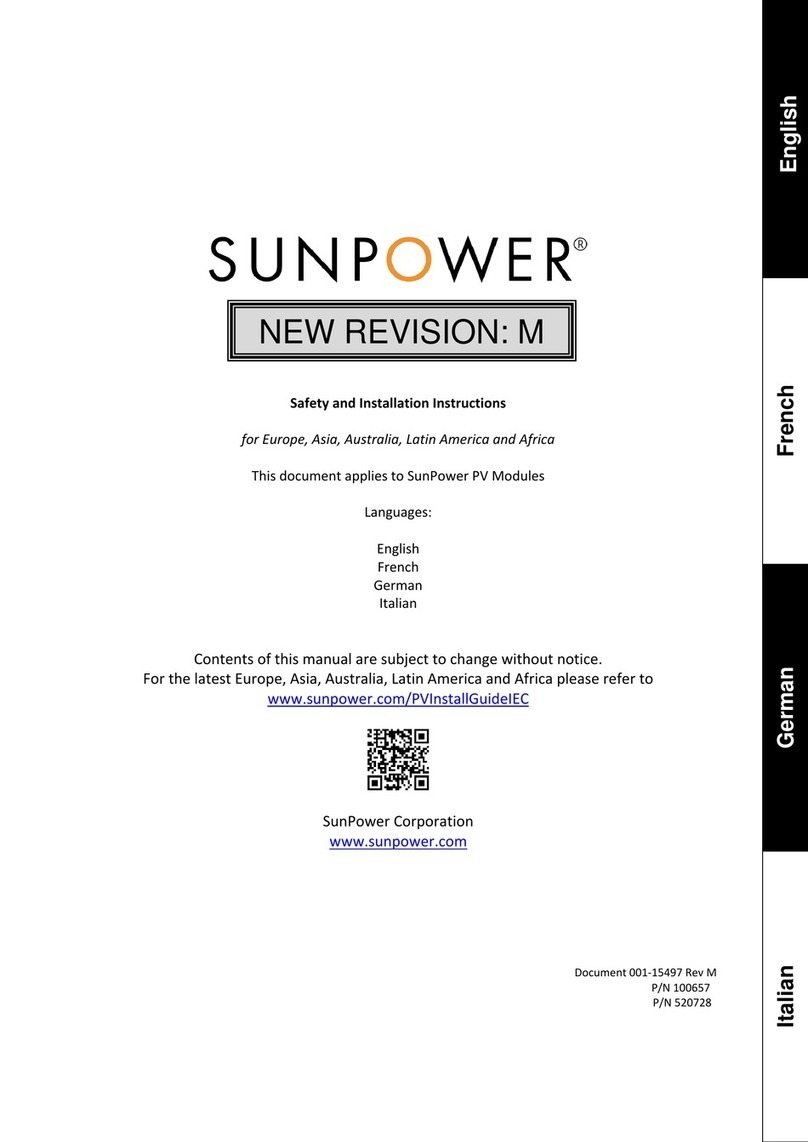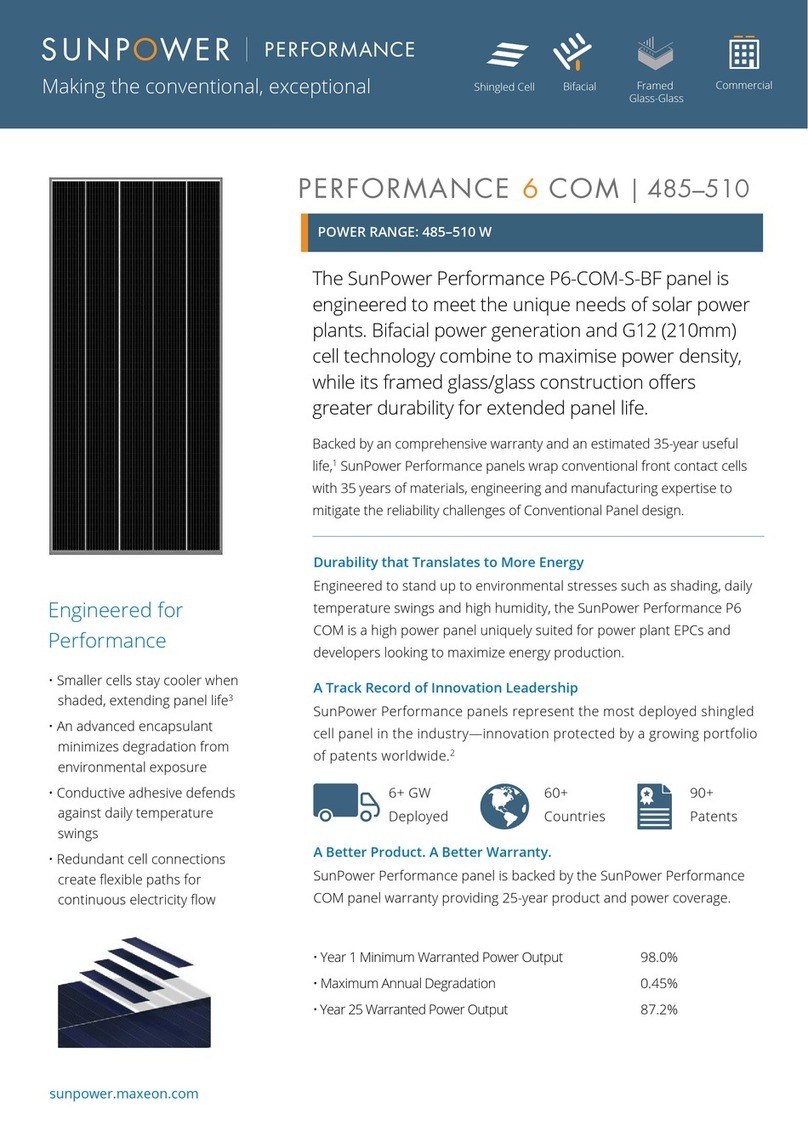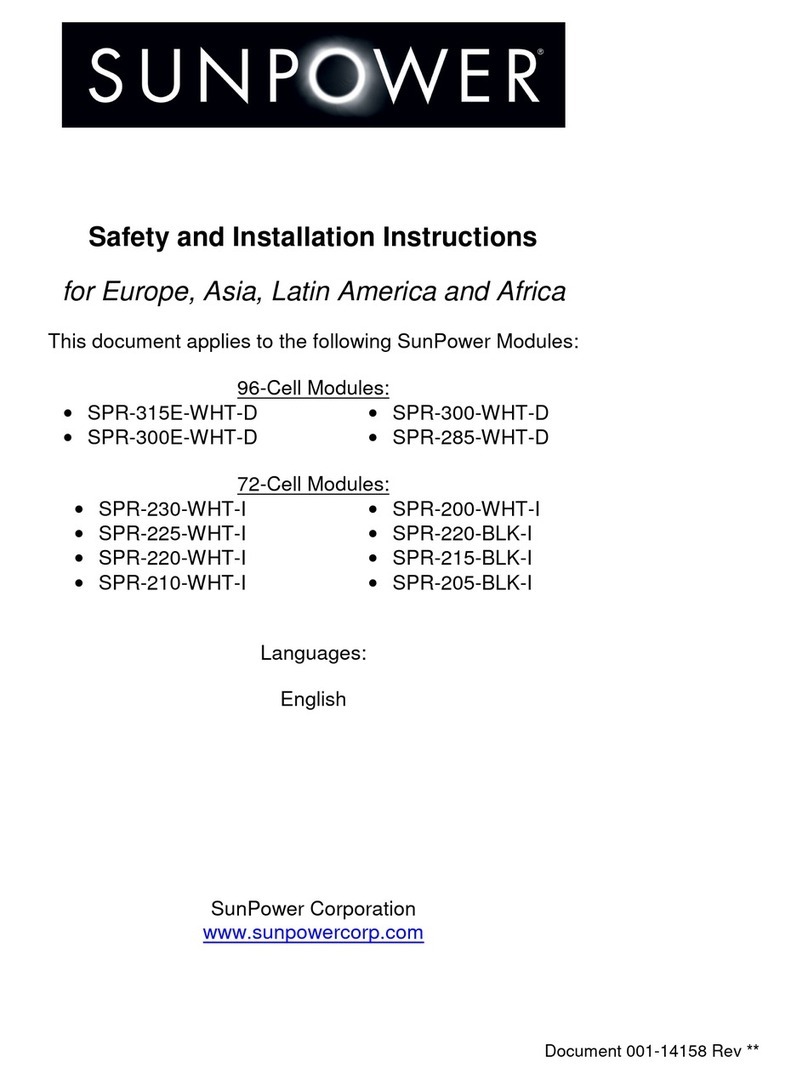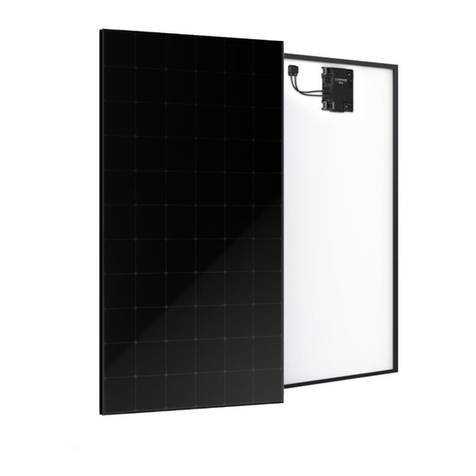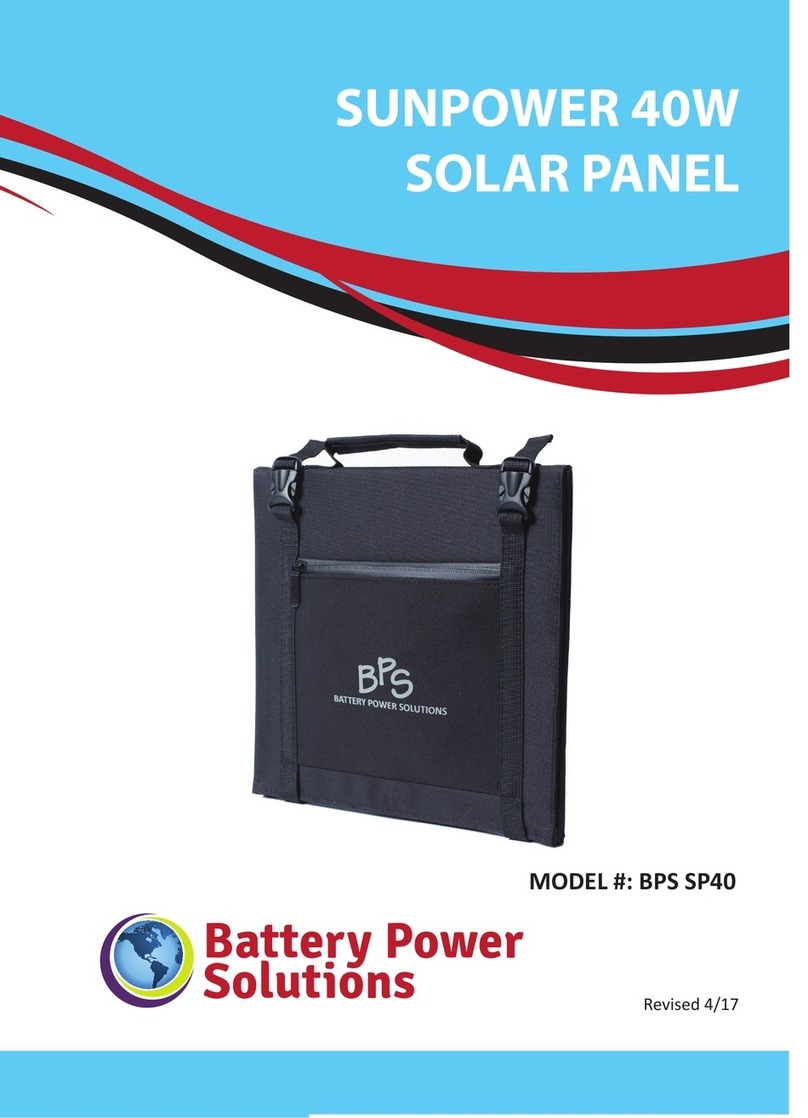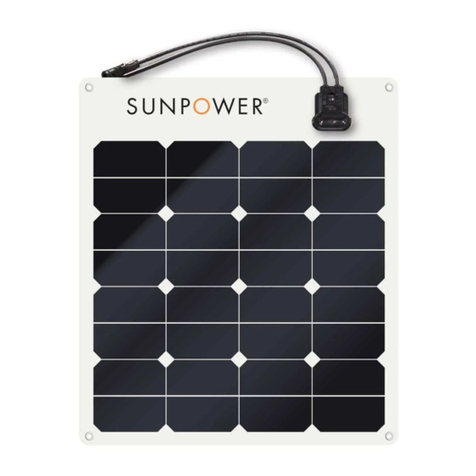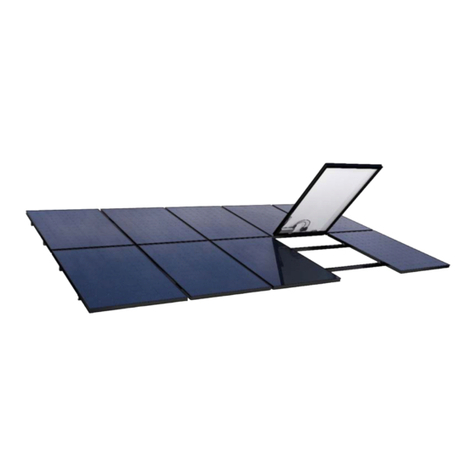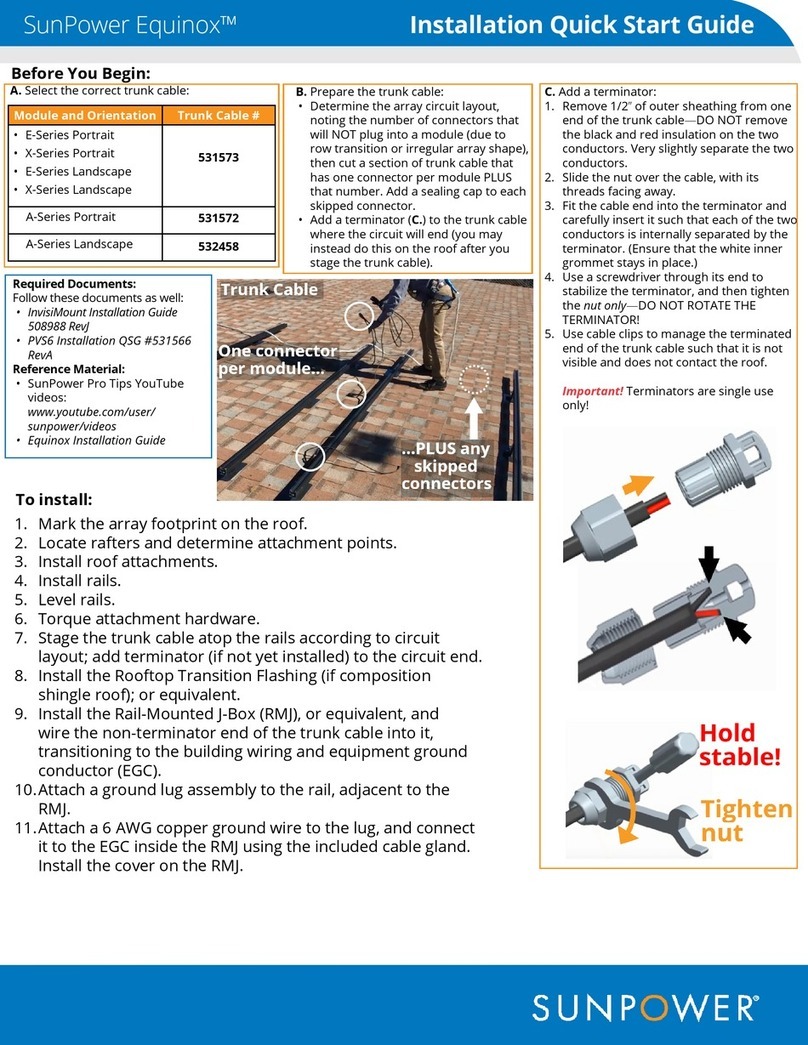
UNPOWER CORPORATION
afety and Installation Instructions - Document 514744 Rev B
©2015 unPower Corporation. All rights reserved. pecifications included in this manual are subject to change without notice.
Safety and Installation Instructions
(United States and Canada)
IMPORTANT AFETY IN TRUCTION
AVE THE E IN TRUCTION
1.0 Introduction
This manual provides safety and installation instructions for UL Listed
unPower AC photovoltaic (PV) modules carrying the UL logo on the
product label (Fig. 1).
Fig. 1
1.1 Disclaimer of Liability
The installation techniques, handling and use of this product are beyond company
control. Therefore, unPower does not assume responsibility for loss, damage, or
expense resulting from improper installation, handling, or use.
1.2 Nationally Recognized Testing Laboratory (NRTL) Listing Information
This product meets or exceeds the requirements set forth by UL1703 and UL 1741
for AC PV Modules. The UL 1703 tandard covers flat-plate PV modules and panels
intended for installation on buildings or those intended to be freestanding. The UL
1741 tandard covers inverters, converters, controllers, and interconnection
system equipment for use with distributed energy resources, including AC
Modules. The NRTL listing does not include integration into a building surface
because additional requirements may apply. This product is not intended for use
where artificially concentrated sunlight is applied to the module.
1.3 Limited Warranty
Module limited warranties are described in full in the unPower warranty
certificates obtainable at www.sunpower.com. In summary, the Limited
Warranties do not apply to any of the following:
PV modules which in unPower's absolute judgment have been subjected to:
misuse, abuse, neglect, or accident; alteration, improper installation, application,
or removal. Including, but not limited to installation, application, or removal by
any party other than a unPower authorized Dealer; non-observance of
unPower's installation, user’s and/or maintenance instructions; repair or
modifications by someone other than an approved service technician of
unPower; power failure surges, lightning, flood, fire, accidental breakage or other
events outside unPower's control.
2.0 Safety Precautions
Before installing this device, read all safety instructions in this document.
•Disconnect the utility AC source from all modules in the PV array before
making or breaking electrical connections.
•It is imperative to use the supplied AC locking connectors in order to defend
against untrained personnel disconnecting the modules after they have been
installed.
•All installations must be performed in compliance with the National Electrical
Code (NEC) and any applicable local codes.
•Installation should be performed only by authorized personnel.
•Remove all metallic jewelry prior to installing this product to reduce the
chance of accidental exposure to live circuits.
•Use insulated tools to reduce your risk of electric shock.
•Do not stand on, drop, scratch, or allow objects to fall on modules.
•Broken glass, J-boxes, broken connectors, and/or damaged backsheets are
electrical hazards as well as laceration hazards. An authorized person should
remove the module from the array and contact the supplier for disposal
instructions.
•Do not install or handle modules when they are wet or during periods of high
wind.
•Contact your module supplier if maintenance is necessary.
•ave these instructions!
3.0 lectrical Characteristics
AC Output Characteristics:
All AC module electrical output characteristics are listed in the Table 2 of the
appendix.
DC Internal Characteristics:
All internal DC electrical characteristics of unPower modules are listed in Table 2
of the appendix.
If an installation involves a unPower AC module which does not appear on this
list please consult the product label on the back of the module or visit
www.sunpower.com for the product datasheet.
3.1 ire Rating
The AC module maintains the same Type 2 fire rating associated with DC
modules.
4.0 lectrical Connections
This unit or system is provided with fixed trip limits and shall not be aggregated
above 30 kW on a single point of common connection.
Modules must only be connected using supplied AC cabling and AC cable
accessories. Do not cut or alter any connectors or cables attached to modules. You
must use the proper AC transition cable adaptor supplied by unPower when
transitioning from the AC module cabling system to other wiring methods.
The connectors on unPower AC modules ship with weatherproof and sunlight-
rated AC locking connectors which after connected require the use of a tool to
disconnect module-to-module connections. This defends against untrained
personnel disconnecting the modules when under load (see ection 2.0). AC
connectors are rated and tested to interrupt load current; however, unPower
recommends that you always open the utility dedicated branch circuit protector to
remove power before plugging or unplugging any connectors; but a local AC
disconnect is not required by unPower.
When installing AC modules the National Electric Code, AN I/NFPA 70 wiring
methods shall be used.
4.1 Equipment Grounding
In accordance with the NRTL Listing of this product and to reduce the possibility of
electrical shock, all metallic components of AC modules shall be grounded.
unPower AC modules shall be grounded using the integrated equipment
grounding conductor contained within the factory-installed AC module cables and
the supplied AC transition cable. This grounding conductor must be connected to
the building or structure’s equipment grounding system and AC grounding
electrode system using NEC-compliant methods. All metallic components of the AC
module are bonded together in the factory so that no additional grounding
conductor attachment to the AC module is required. This method meets NEC
requirements for grounding.
Important! Please read this instruction manual in its entirety before
installing, wiring, or using this product in any way. Failure to comply
with these instructions will invalidate the SunPower Limited
Warranty for P Modules.
alternating current (AC) and are sources of voltage when the module is
under load and when it is exposed to light. Electrical currents can arc across
gaps and may cause injury or death if improper connection or
disconnection is made, or if contact is made with module leads that are
frayed or torn.
